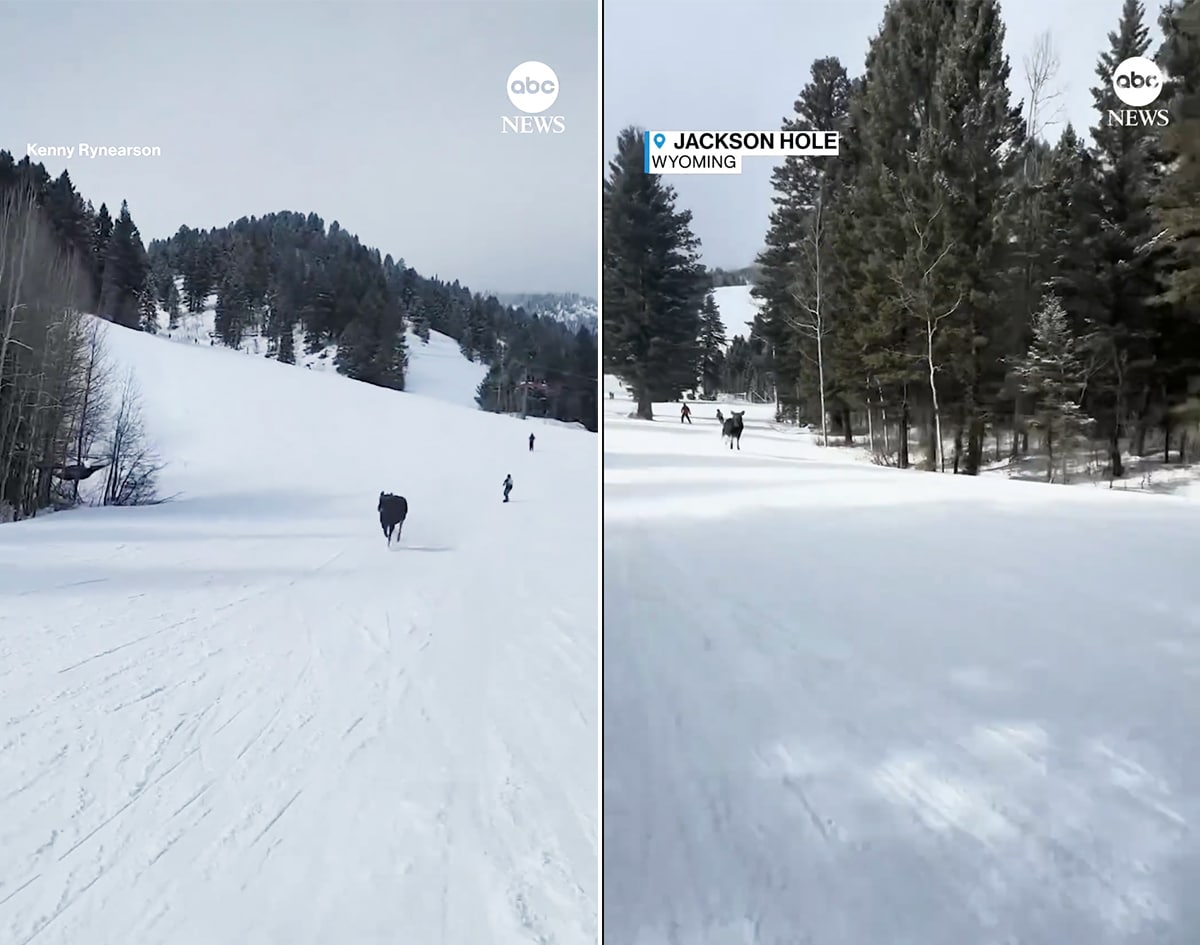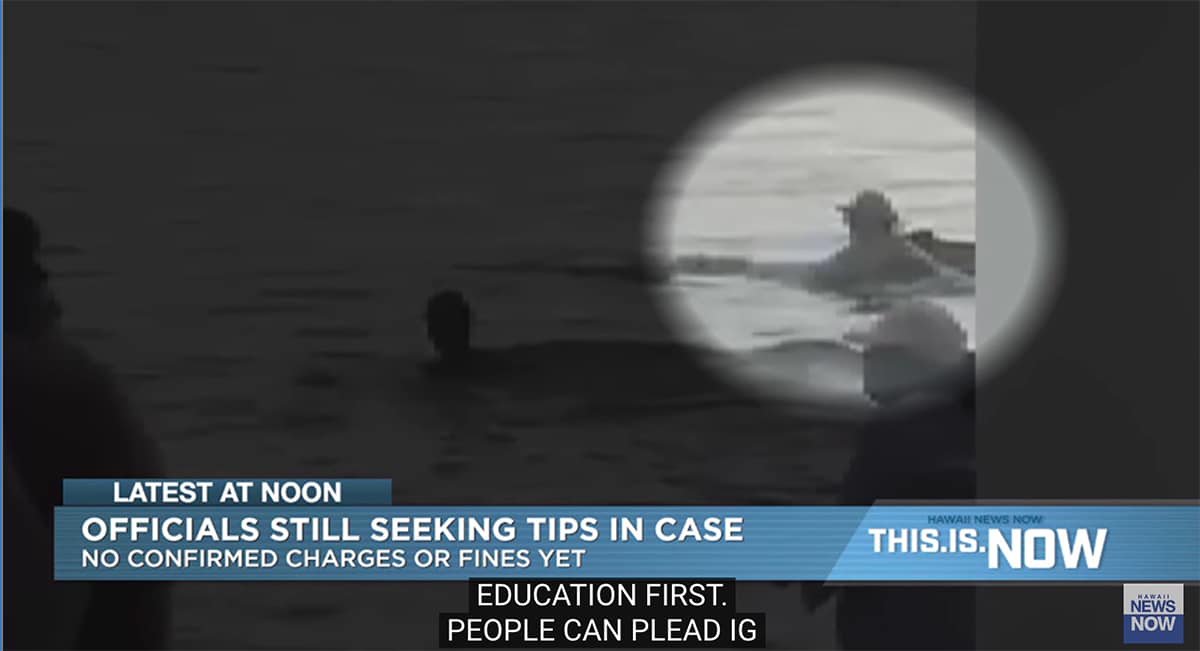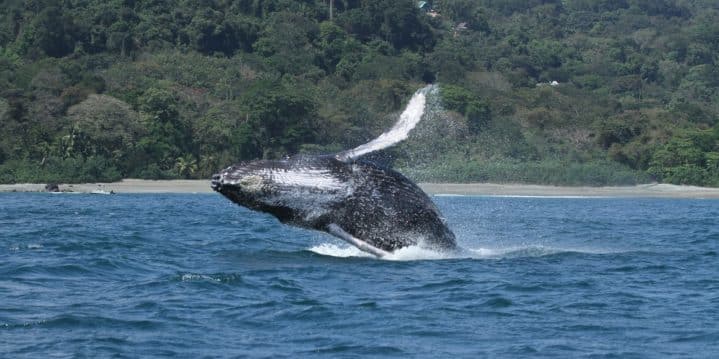
Imagine navigating the calm waters of a tropical fjord enveloped by rainforest—with no one else in sight, exotic birds gliding above‚and suddenly you’re surrounded by dolphins. Hundreds of them. Jumping, doing flips and loving their pristine habitat. You follow them as they travel for miles, feasting and caring for their young, and then you hear the mating call of the humpback whale. A short distance away, you see two migrating males heading towards the female whales that visit the shallow waters to breed. This is Golfo Dulce, an exotic inner sea in south Pacific Costa Rica, teeming with wildlife.
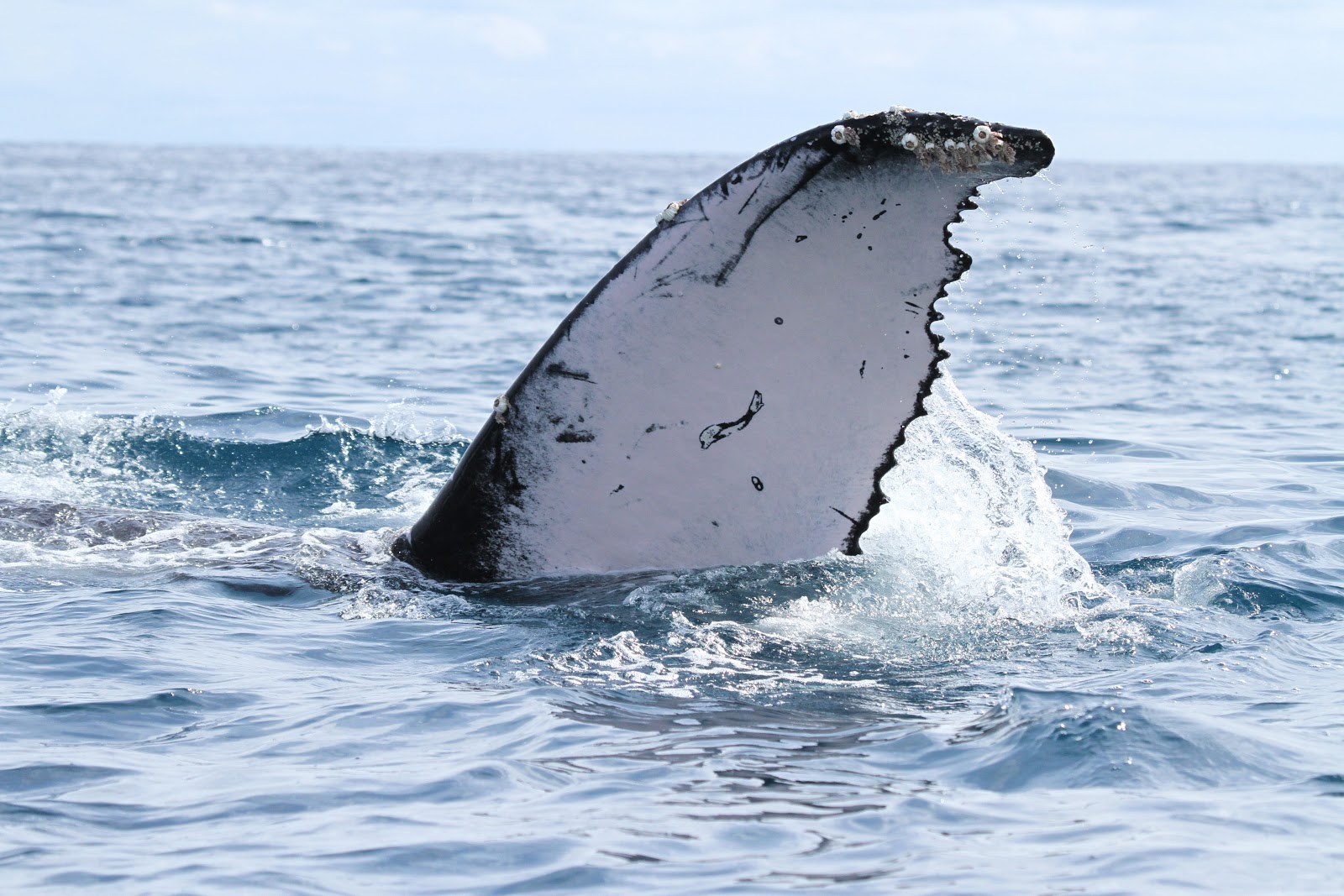
Golfo Dulce is one of only three tropical fjords in the world—its long, narrow inlet surrounded by the rugged wilderness of Osa Peninsula—and it offers an ideal getaway for nature-lovers. It’s where I ventured when I signed up for an Earthwatch expedition to survey the endangered dolphins and whales that call this haven home. Earthwatch is an international charity supporting scientific research to protect our natural resources. On its numerous research trips, which are open to all who are interested, participants contribute alongside top scientists and locals working on the front lines of conservation.
Below, I’ve outlined a bit on amazing experience that awaits when you book a trip to help safeguard the marine life of Golfo Dulce with Earthwatch. Your assistance could very well make this paradise a protected area!
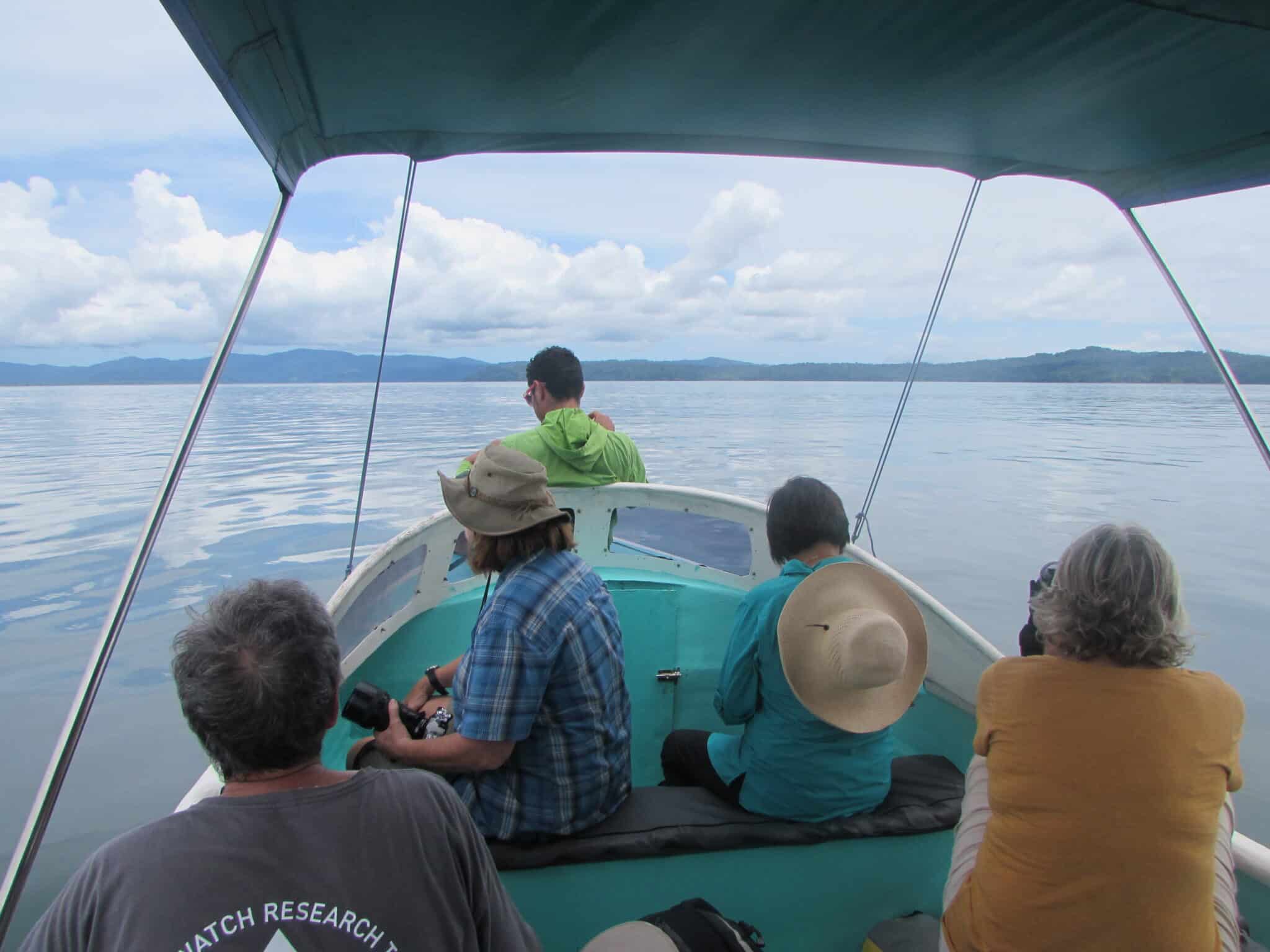
What to expect
Earthwatch’s “Safeguarding Whales and Dolphins“ journey works closely with the CEIC (Centro de Investigación de Cetáceos) on the Osa Peninsula, which holds 2.5% of our planet’s biodiversity. Scientist Lenin Oviedo and research student David Herra Miranda work closely with ten participants, from all walks of life and age groups, on each voyage. Every morning, the group is divided into two; while one group goes out on the boat to collect data and take pictures of the cetaceans (whales and dolphins), the other stays behind to photo-identify the animals by markings on their fins and flukes (tail).
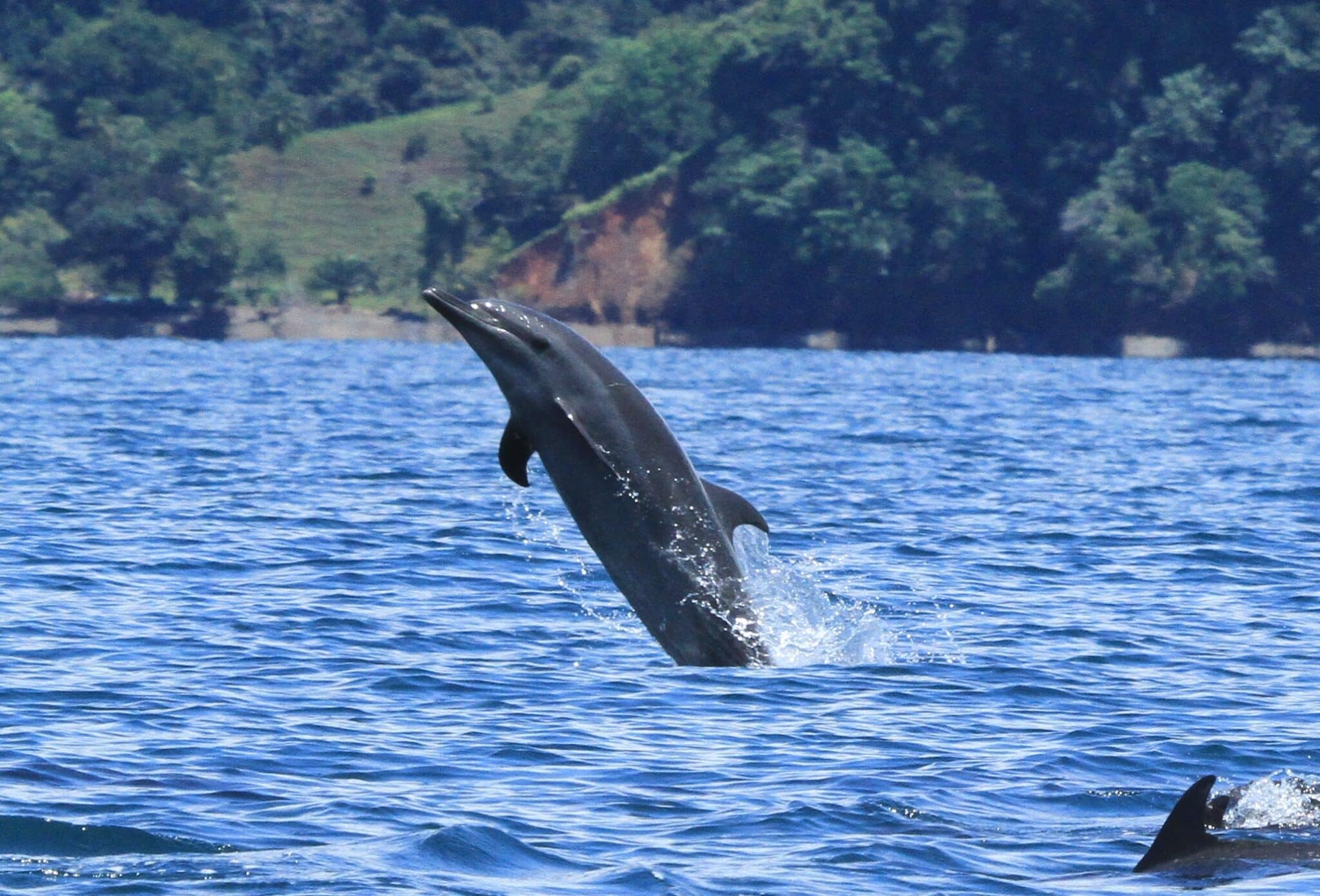
The nautical crew follows groups of dolphins and whales, takes notes on water temperature and animal behavior, and brings back valuable data to the scientists onboard the ship. Both the spotted and bottlenose dolphins are recognized by the markings on their fins; close-up pictures allow members to easily identify them and add to existing statistics to keep track of populations. Similarly, photos of the flukes help identify whales that migrate to the gulf to reproduce and raise their young.
Cameras and notepads are provided, but as a participant, you should be sure to bring plenty of sunscreen and reusable water bottles as you may spend up to four hours at sea. And time really flies when you’re witnessing nature at its best. Watching dolphins forage and seeing their playful babies is a true delight. On longer days, the whole group stops at a secluded beach for lunch and a swim.
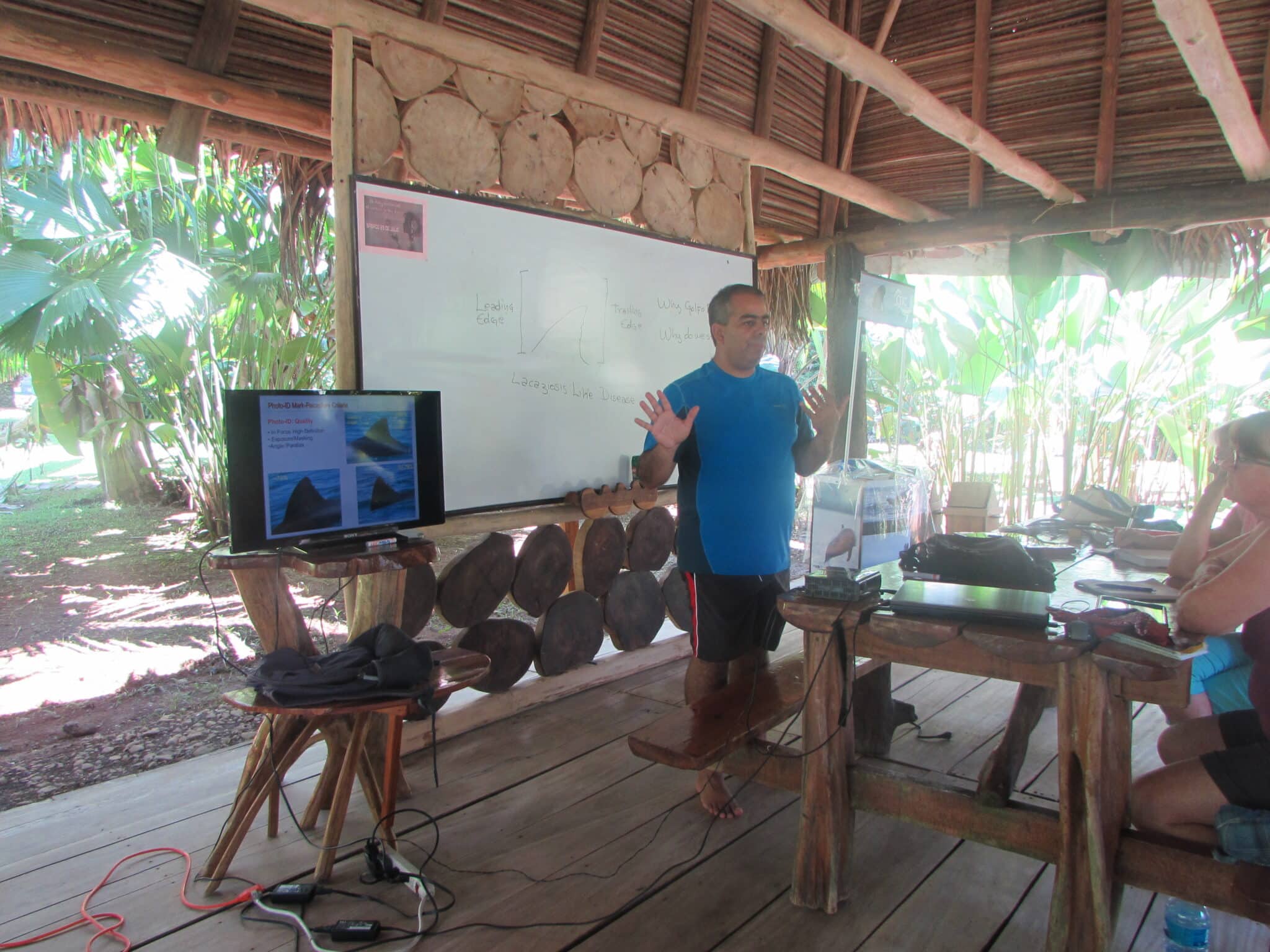
How you’re helping
Since Golfo Dulce is a closed environment (compared to the open ocean), marine life there is extremely vulnerable to habitat disruption. In recent years, dolphins have been observed with white spots from a fungal skin infection called Lacaziosis-like disease (LLD). The same infection has claimed the lives of many dolphins in Florida. When spread to vital organs, the fungus is fatal. Warming waters have also contributed to a reduction in the cetacean population via unregulated fishing, contamination and boat traffic, resulting in the deaths of prey upon which dolphins rely.
Gathering data on the cetacean population, along with its distribution and habitat preferences, allows scientists to inform government decision-makers on conservation efforts. The more they know, the more they can, for example, propose ways to prevent boat collisions by diverting traffic and mitigating the adverse effects of overdevelopment.
The research is more critical now than ever, as there is a proposed expansion of a marina at the mouth of Golfo Dulce to accommodate up to 200 boats. When completed, this marina could contribute to more pollution, collisions and increased noise that would deter whales from entering the gulf. Protecting this critical habitat is crucial to the locals and the scientists; as a global citizen, you can play a vital role in preserving this ecological wonder alongside Earthwatch.
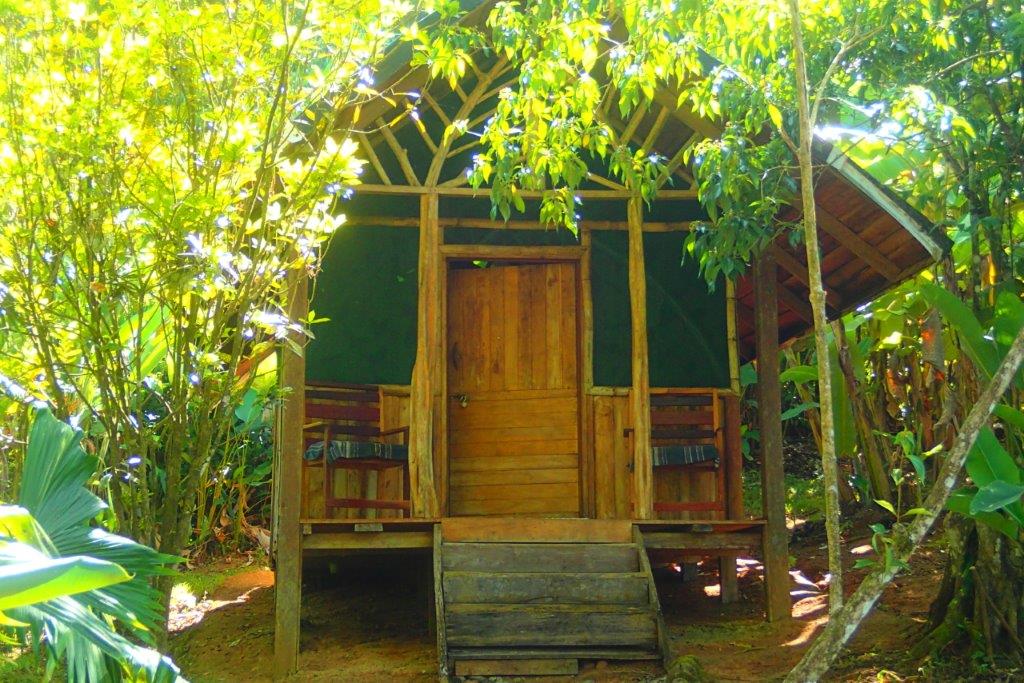
Accommodations
Conservation relies heavily on the local community, and there’s no better way to support the effort—after joining an Earthwatch trip—than by staying at a family-owned hotel, where Earthwatch sets up its guests. On our trip, we stayed at David Herra Miranda’s eco-lodge, El Chontal, located in Rincon, Osa Peninsula, situated conveniently on the shores of Golfo Dulce. Beautifully designed cabins set against the backdrop of the thick rainforest greet you at El Chontal, named after the palm trees that adorn the sweeping property. Handcrafted designs—curated by David’s mother, Azucena, and built by David and his father from fallen trees and sustainable wood from the surrounding mangrove forest—add creative touches to the charming, clean cabins. A large, open-air communal pavilion with hammocks, tables and chairs provides the ideal spot for the group to convene to discuss the day’s activities and relax in their spare time.
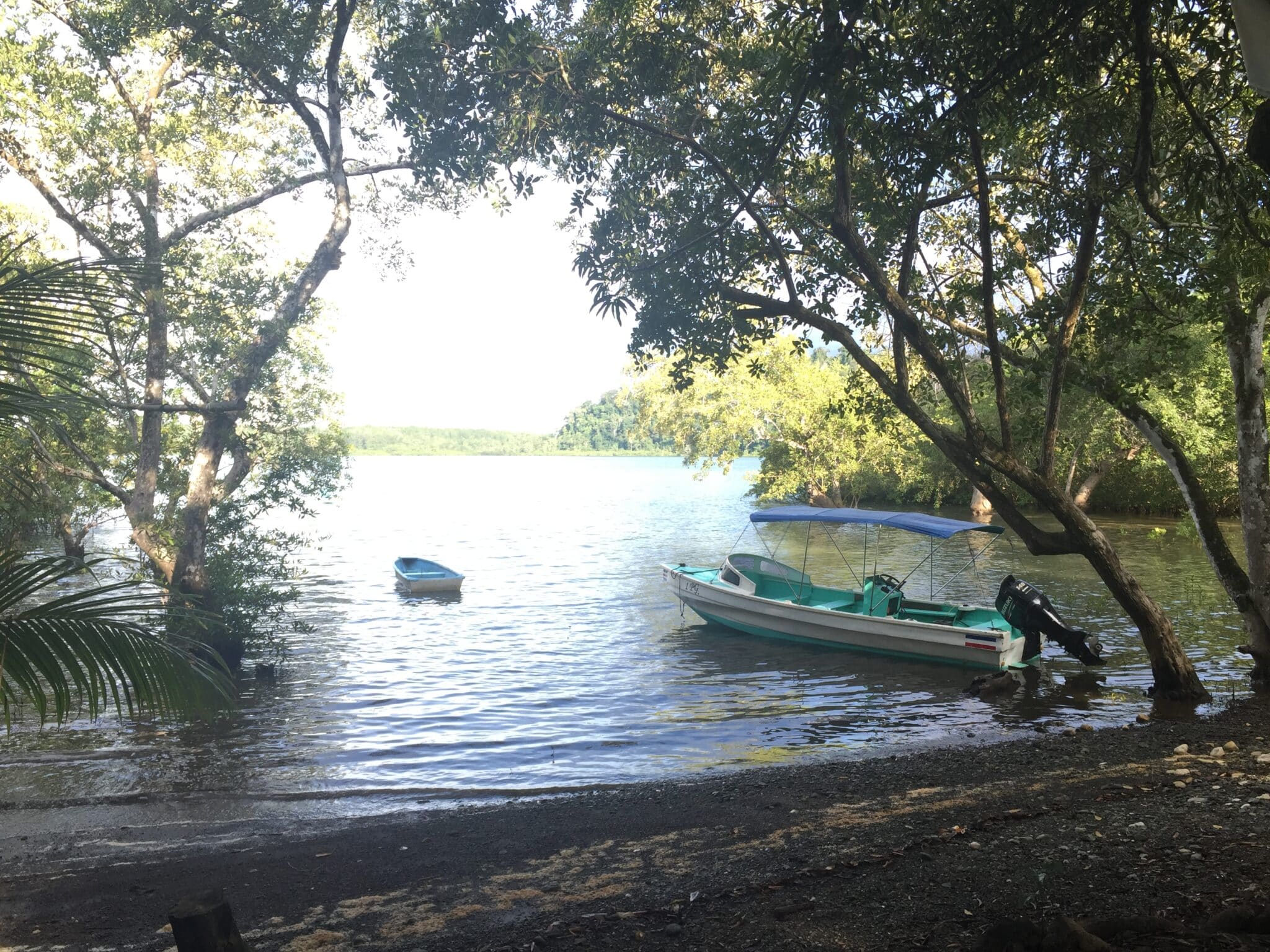
Since the lodge is located in the rainforest, expect rain every day, and keep an eye out for toucans that hang out in the trees and frogs that dot the walkways. Delicious, traditional meals cooked by Azucena are provided, including boxed lunches for day trips. Daily boat tours leave early in the morning right from El Chontal’s backyard.
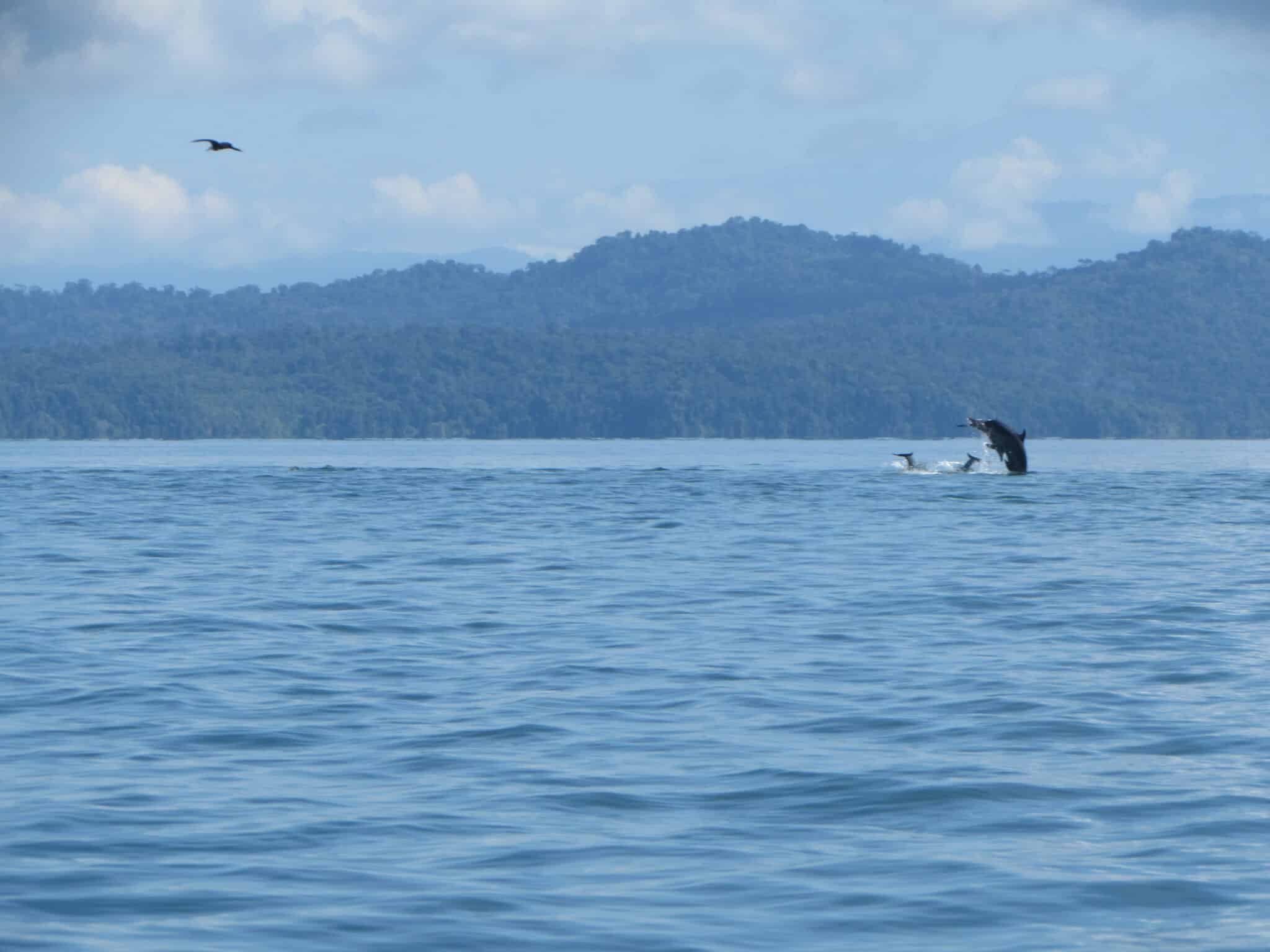
Getting there (as air is not included)
Fly to Juan Santamaria International Airport in San Jose and hop on a 50-minute flight to Puerto Jimenez via Sansa or Nature Air ($98 roundtrip). The group leader will pick you up and drive to El Chontal, which is a half-hour away.
Trip schedule and costs
Earthwatch’s “Safeguarding Whales and Dolphins” runs nine days. Here are available dates in 2017:
- January 30 – February 07, 2017
- February 20 – February 28, 2017
- July 11 – July 19, 2017
- August 8 – August 16, 2017
- August 22 – August 30, 2017
- December 02 – December 10, 2017
Cost (including food and lodging): $2,350
There aren’t many opportunities in life where one gets to witness animals in their natural habitat, and play a role in preserving their home. This trip was an eye-opening experience for me, and I hope many others get a chance to participate. The dolphins and whales of Golfo Dulce need us!
For more on Earthwatch expeditions in Costa Rica and beyond, visit earthwatch.com or call 1-800-776-0188.





